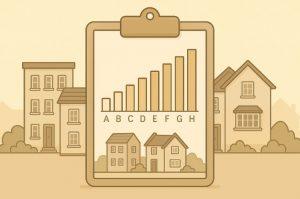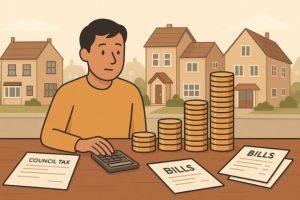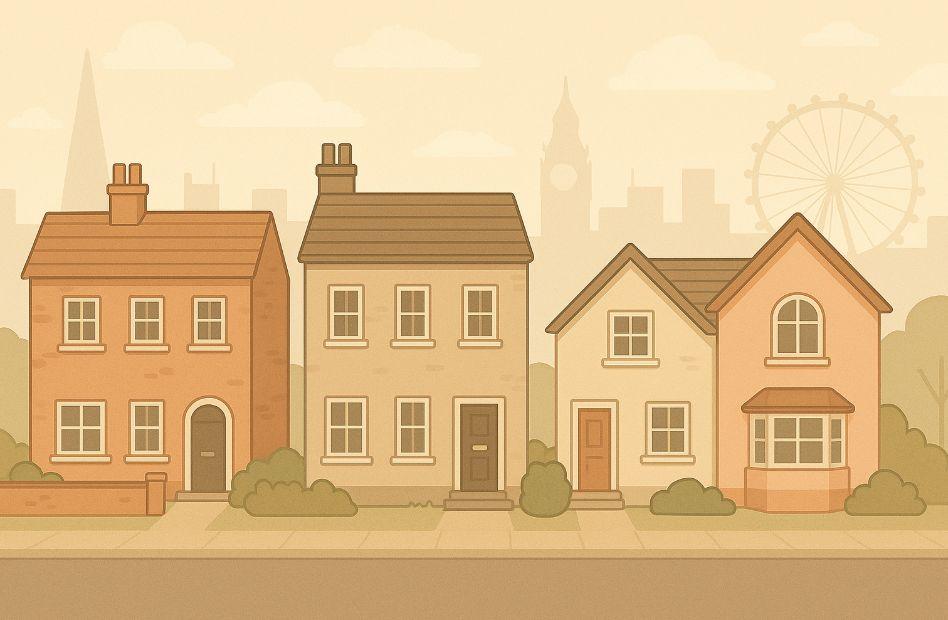Understanding how council tax works is essential for every property owner and tenant in the UK particularly in London, where rates can vary significantly across boroughs. One of the most common questions people ask when moving into a new home or reviewing their household expenses is, “What council tax band am I?”
Council tax bands determine how much you pay annually to your local authority for essential public services, including waste collection, policing, and education. Set by the Valuation Office Agency (VOA), these bands are based on the property’s estimated value as of 1991 not its current market worth and fall into categories ranging from A to H.
Whether you’re concerned about overpaying, planning a move, or simply want to better understand your financial obligations, this comprehensive guide will walk you through everything you need to know about checking, understanding, and potentially appealing your council tax band in London.
What Is a Council Tax Band?

Council tax is a local taxation system in England, Scotland, and Wales, levied on residential properties. In England, each residential property is placed into a council tax band according to its assumed market value as it would have been on 1 April 1991.These bands range from A to H, with Band A being the lowest and Band H the highest.
Understanding your band is crucial because it directly determines how much council tax you pay annually. Each local authority sets its own rates for each band, so two properties in different boroughs but with the same band may incur different costs.
Moreover, your council tax band plays a role in eligibility for discounts or exemptions and impacts whether you’re potentially overpaying or underpaying your bill.
How Are Council Tax Bands Calculated in the UK?
Council tax bands are based on the value your property would have sold for in 1991, not its current market value. Even newly built homes are retroactively valued based on that date using a comparative approach by the Valuation Office Agency (VOA).
The criteria influencing band allocation include:
- Size and layout of the property
- Location and surroundings
- Property type (detached, flat, terrace, etc.)
- Market value benchmarks from 1991
Here’s how council tax bands are classified in England:
| Band | 1991 Property Value |
| A | Up to £40,000 |
| B | £40,001 to £52,000 |
| C | £52,001 to £68,000 |
| D | £68,001 to £88,000 |
| E | £88,001 to £120,000 |
| F | £120,001 to £160,000 |
| G | £160,001 to £320,000 |
| H | More than £320,000 |
These bands remain consistent unless formally reassessed through appeal or property modifications.
Where Can I Find My Council Tax Band Online?
To check your current council tax band, you can visit the official GOV.UK Council Tax band checker. By simply entering your postcode, you’ll be shown a list of properties on your street along with their respective bands.
In London, you can also visit your local borough council’s website, where they often provide a direct lookup tool and contact information for queries or disputes.
You’ll also find council tax band information on many property websites such as Rightmove or Zoopla under the property details section.
How Accurate Is the Council Tax Band for My Property?

Surprisingly, many properties are incorrectly banded, especially those valued in the early days of the system. The initial band assignments were often done hastily and, in some cases, without physical inspections.
Properties in London that have undergone changes like extensions, conversions, or even significant repairs might no longer reflect their original banding accurately.
The Valuation Office Agency allows homeowners to request a reassessment if they believe their band is wrong. If a property is placed in the wrong band, the homeowner may unknowingly pay too much in council tax over an extended period.
Can I Appeal My Council Tax Band?
Yes, you can challenge your council tax band, but certain conditions must be met:
- You’re a new owner or tenant (within 6 months of moving in)
- There have been structural changes to your property
- A neighbouring similar property has a lower band
- Your property has been newly built or demolished and rebuilt
To start an appeal, you’ll need to contact the VOA with evidence such as comparable properties and sale prices. Be aware: if the VOA finds your property should be in a higher band, they may increase it instead.
What Happens If My Council Tax Band Changes After a Review?
When a reassessment or appeal leads to a change in your council tax band, the financial impact may apply to previous billing periods, not just future payments.
- Reduced band: You may receive a refund of overpaid council tax (backdated, typically to when you moved in)
- Increased band: Your future council tax bills may rise, and sometimes you’ll be liable for arrears
- Same band: No changes are made; however, you won’t be penalised for a failed appeal
Some local authorities adjust charges immediately after a decision, while others may take several billing cycles.
Why Are Council Tax Bands in London Different?
While council tax bands are standardised nationally, London boroughs have significant variation in rates charged per band.
This is due to:
- Different local government funding needs
- Services provided in each borough
- Differences in average property values
For example, Band D in Westminster may cost significantly less annually than Band D in Croydon or Camden.
| Borough | Band D Annual Tax (Approx.) |
| Westminster | £864 |
| Camden | £1,918 |
| Croydon | £2,069 |
| Hackney | £1,845 |
| Kensington & Chelsea | £1,246 |
(Source: Respective London Borough Council sites, 2025 figures)
Who Sets and Oversees Council Tax Banding?
In England and Wales, it is the Valuation Office Agency (VOA) that handles the classification and upkeep of council tax bands. Though they function independently, they are managed under the authority of HMRC.
Your local authority, however, determines the actual council tax charge per band based on funding needs, services, and budgeting decisions. They are also the first point of contact for billing queries.
What Tools Can I Use to Check My Council Tax Band?
There are several ways to verify your property’s band quickly:
| Tool | Features |
| GOV.UK Band Checker | Official government source; postcode-based lookup |
| Zoopla/Rightmove | Shows council tax band on property listings |
| Local Council Website | Often has its own database or direct checker |
While third-party tools can be helpful, always confirm any discrepancies with GOV.UK or your local council.
How Do Council Tax Bands Affect?

Your home’s council tax band sets the foundation for how much council tax you’re expected to pay each year. Each borough in London sets their rates annually, and the cost difference from Band A to H can be significant.
Let’s look at an example based on an average borough:
| Band | Approx. Annual Charge |
| A | £1,200 |
| D | £1,800 |
| H | £3,600 |
(These figures vary based on borough budgets, precepts, and discounts.)
Don’t forget, if you live alone, are a student, or receive benefits, you might qualify for discounts or even full exemptions.
What Are Common Misconceptions About Council Tax Bands?
Many London residents believe that any property improvement, like a kitchen extension, automatically changes their council tax band. That’s not true unless the property is sold or re-assessed under special conditions.
Another myth is that council tax bands are routinely updated in reality, there hasn’t been a national revaluation since 1991.
It’s also wrongly assumed that similar-looking homes always share the same band. In fact, small layout differences or historical data can cause band variations even within the same street.
Conclusion
For Londoners asking, “What council tax band am I?” the answer is just a few clicks away using trusted tools like GOV.UK or local authority websites. Understanding your band helps you budget smarter, identify potential overcharges, and take informed action when needed.
In a city as diverse as London, where property values fluctuate widely between boroughs, being aware of your council tax band is more than just a technicality. it’s a tool for financial clarity.
FAQs
What happens if I pay the wrong council tax band?
Overpayments are typically refunded if your property is rebanded to a lower category. You won’t be penalised unless underpayments were due to incorrect declarations.
Can I request a council tax band review anytime?
You can request a review at any time, but it’s more likely to be accepted within six months of moving in or when there are valid grounds for reassessment.
Are new properties assigned a council tax band?
Yes, the VOA assigns a band based on what the property would have been worth in 1991, using comparable valuations.
What is the average council tax bill in London?
On average, Band D properties in London pay around £1,600–£2,000 annually, depending on the borough.
Can my council tax band go up after home improvements?
Not immediately. A band increase usually only occurs after the property is sold, triggering a revaluation.
How long does it take to get council tax band appeal results?
Typically, VOA decisions are issued within 2 to 3 months, depending on the complexity of the case.
What support is available for those struggling to pay council tax?
Council tax support schemes vary by borough. Most offer reductions based on income, age, or circumstances such as disability or caring responsibilities.









Leave feedback about this